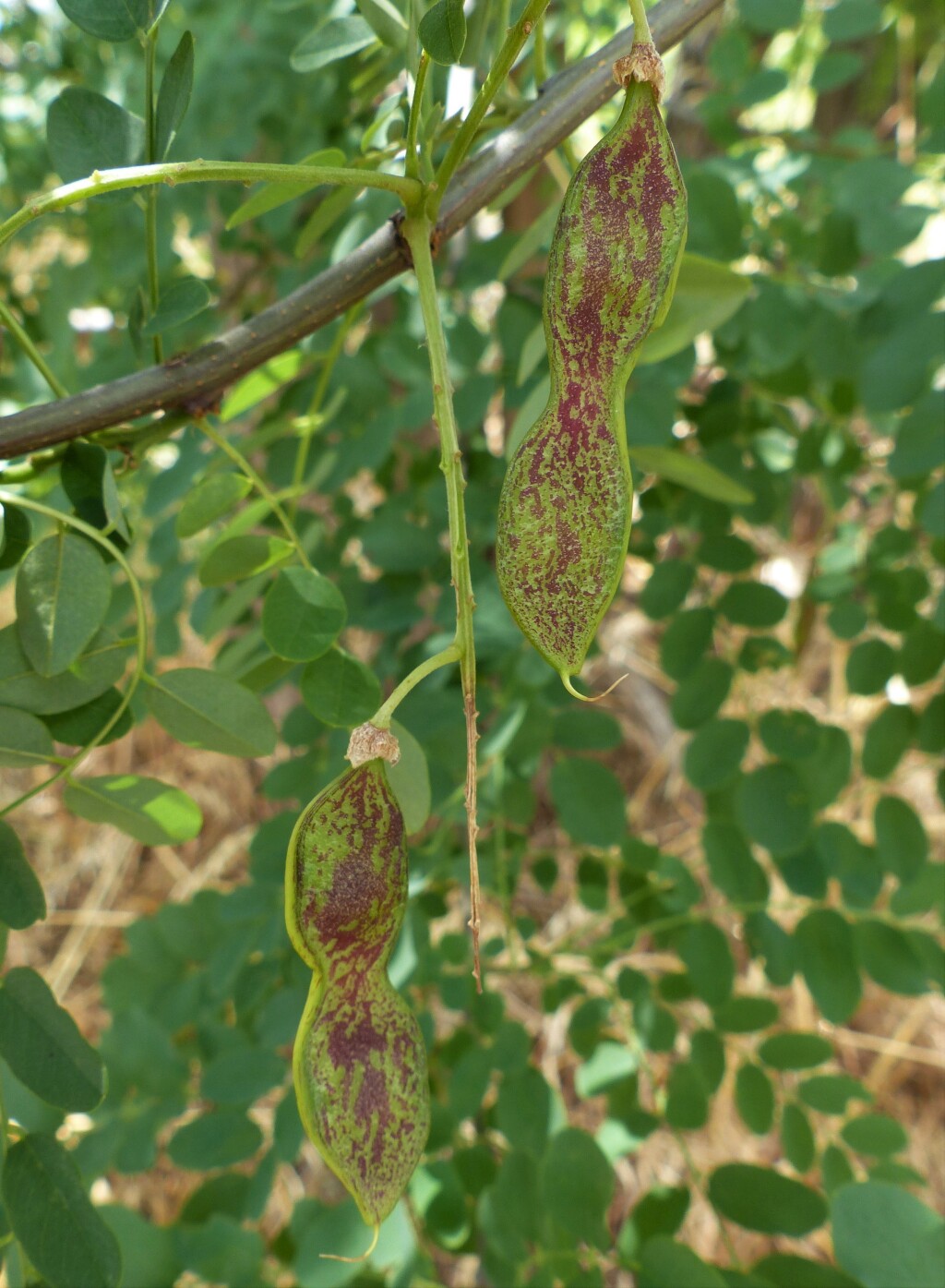Robinia pseudoacacia
L. Locust TreeDeciduous, root-suckering tree to c. 17 m tall; younger stems hairy. Leaves 8–15 cm long; leaflets 11–21, oblong to obovate, 1.5–5 cm long, 1–2.5 cm wide, obtuse to emarginate, mucronate, glabrescent, margins entire; petiole 2–4 cm long; petiolules 1–3 mm long; stipellae 0.5–1.5 mm long; stipules becoming spiny, 5–25 mm long. Inflorescences 10–15 cm long; peduncle 1–3 cm long. Flowers many, fragrant; pedicels 5–10 mm long; calyx campanulate, c. 6 mm long, sparsely pubescent, teeth shorter than tube, unequal; corolla 15–20 mm long, white, pink or purplish; standard suborbicular; wings oblong-falcate; keel obtuse, about as long as wings; anthers uniform. Pod 3–8 cm long, 10–15 mm wide, pendulous, glabrous; seeds reniform, c. 5 mm long, mottled. Flowers Sep.–Nov.
Wim, VVP, VRiv, GipP, OtP, Gold, CVU, GGr, NIS, HSF, HNF, MonT. Also naturalised SA, Qld, NSW, ACT. Native to North America. An often cultivated ornamental tree that has become sporadically naturalised in Victoria, due largely to its vigorous suckering habit.
Jeanes, J.A. (1996). Fabaceae. In: Walsh, N.G.; Entwisle, T.J., Flora of Victoria Vol. 3, Dicotyledons Winteraceae to Myrtaceae, pp. 663–829. Inkata Press, Melbourne.
 Spinning
Spinning



